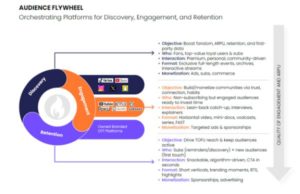Kiloview – A technical dialogue with an AVoIP Expert, sharing their insights on NDI 6.0
The announcement of NDI 6: “The next step in IP connectivity”
The recent announcement of NDI 6 has been highly anticipated in the AV over IP industry. NDI technology maintains a significant leadership position with its software-driven video transmission concept, tailored for IP networks and internet applications. These advancements provide unique advantages over other IP technologies. With the latest developments, we see notable progress in supporting HDR video encoding and decoding capabilities, as well as cross-internet applications. Tools like NDI Bridge introduced in NDI 5 had limitations that NDI 6 has now addressed, making it an exciting development for the entire industry.
Key features of NDI 6: Native HDR support and enhanced NDI Bridge Utility
HDR significantly enhances the visual experience. While HDR is not new in the video industry and is supported by various audio/video devices, integrating it into NDI posed several technical challenges due to the need for video conversion during encoding compression. A major challenge was the lack of support for 10-bit or 12-bit encoding in previous NDI implementations. NDI 6 resolves this issue and includes the capability to transmit HDR metadata alongside NDI network transmission, thereby significantly improving HDR support to meet the demands of various industries for high-quality video and image content.
 NDI Bridge, present since NDI 5, was initially limited to computer-based tools, requiring at least two computers for cross-internet NDI transmission. This method, while effective, relied solely on software and was primarily available for Windows systems. With NDI 6, NDI Bridge Utility has been standardized as an internal component of the NDI SDK, ensuring that all products/devices using the NDI SDK can provide NDI Bridge Utility functionality. This development facilitates seamless internet connectivity between all NDI devices, promoting communication and collaboration across the audio/video industries.
NDI Bridge, present since NDI 5, was initially limited to computer-based tools, requiring at least two computers for cross-internet NDI transmission. This method, while effective, relied solely on software and was primarily available for Windows systems. With NDI 6, NDI Bridge Utility has been standardized as an internal component of the NDI SDK, ensuring that all products/devices using the NDI SDK can provide NDI Bridge Utility functionality. This development facilitates seamless internet connectivity between all NDI devices, promoting communication and collaboration across the audio/video industries.
The challenge of moving from 8-bit to 10-bit+
The major challenge is technical limitations such as transmission and storage bandwidth. Assuming when we use 8-bit color depth, it means we have 2 to the power of 8 (bit), which gives us 256 color levels. These 256 levels now allow for 256 steps in color transition. However, this limited number of levels can only represent a restricted range of colors. When it comes to presenting very delicate details, it may lead to certain issues. Additionally, when we talk about HDR, we have to consider brightness and color, which involves the concept of the gamma curve. To put it simply, 8-bit color depth struggles to represent a high dynamic range effectively.
Now, let’s consider 10+ bit performance. Technically, we know that video compression requires capturing & storing images first, and then using CPU or FPGA processing to compress the images. Although it might seem that increasing from 8-bit to 10-bit is just a 25% increase, when it comes to storage, this additional data significantly impacts memory usage. Since memory is structured in 8-bit bytes, storing 10-bit data means that we may need an additional byte. This results in a substantial increase in memory access bandwidth, which, in turn, places a much higher demand on the processing power of the CPU or FPGA. Therefore, overcoming the performance leap from 8-bit to 10-bit is not an easy technical hurdle. This is why, up until now, the industry has mostly stuck with 8-bit processing for IP-based networks.
Leading the way: Kiloview’s forward-thinking approach
Kiloview’s N series (N50/N60) was designed with the aim of supporting HDR and achieving better image quality by supporting 10-bit or 12-bit encoding and color spaces like YUV 4:2:2 or even YUV 4:4:4. By starting the design and development process early, Kiloview ensured that its products were ready by the time NDI 6 was released. The hardware does not require any modifications to support NDI 6, thanks to this forward-thinking approach initiated at least two years ago. Kiloview carefully selected chips with processing power and bandwidth capabilities to meet the requirements, especially for implementing SpeedHQ, which relies on FPGA-based processing. For instance, products like N50/N60 series inherently possess 10-bit encoding and decoding capabilities for H.264 and H.265 compression and decompression.

Future prospects for NDI technology & Kiloview’s development
NDI’s greatest strength is its software-driven video concept. Compared to other AV over IP technologies, NDI stands out due to its unique, forward-thinking, software-based approach. While other AV over IP technologies heavily rely on hardware support, NDI’s software-driven methodology allows for encoding and decoding entirely via software, even on mobile and embedded devices. With NDI 6 expanding the concept of the internet, the future of NDI technology is full of possibilities and will undoubtedly lead the way in technological advancements.
NDI’s future expansion into more industries such as medical analysis, digital signage, conference rooms and auditoriums is promising, where tier-1 image quality is required for specific use. However, it still carries a certain level of specialization. Many users have provided feedback indicating that dealing with network-related issues or IP technology can be challenging once devices are connected to network switches, as the data transmission occurs within an invisible and intangible network.
Kiloview is committed to addressing these challenges. In the future, we envision our users being able to plug and play when using products, such as encoders, decoders, matrices, and other systems within the NDI ecosystem, without needing to master extensive networking knowledge. Upon connecting to the network, users will be able to view each device’s status, data flow direction, network anomalies, and device loads through a simple and intuitive graphical interface. Kiloview will provide dedicated control software to assist users in resolving these issues, enabling them to monitor and manage devices through a graphical interface without requiring an understanding of complex network technologies.









